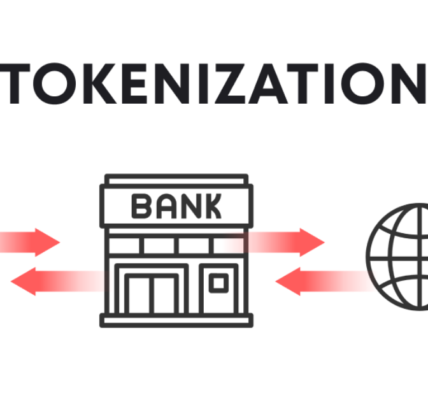Liquidity pools play a fundamental role in the functioning of decentralized finance (DeFi) ecosystems. They are an essential feature of decentralized exchanges (DEXs) and many other DeFi protocols, providing liquidity for assets in a way that allows users to trade, borrow, or lend without relying on centralized intermediaries. However, like any financial product, liquidity pools carry inherent risks, which users need to understand before they decide to participate.
In this article, we will explore how liquidity pools work, the benefits they provide, and the various risks associated with them. By understanding these risks, users can make more informed decisions and navigate the world of DeFi more safely.
How Liquidity Pools Work
At a high level, a liquidity pool is a collection of assets locked in a smart contract that provides liquidity to a decentralized market. In traditional finance, liquidity is provided by market makers, who act as intermediaries to buy and sell assets. In the DeFi world, liquidity pools eliminate the need for intermediaries by allowing users to contribute their assets directly to a pool. These contributors are often referred to as liquidity providers (LPs).
Liquidity pools are typically composed of two or more different assets, such as Ethereum (ETH) and USD Coin (USDC). When users want to trade between these two assets, the liquidity pool automatically facilitates the exchange. The price of the assets in the pool is determined by an automated market maker (AMM), which uses a mathematical formula to balance the assets and set prices based on supply and demand.
For providing liquidity to the pool, liquidity providers earn rewards, usually in the form of trading fees. The more liquidity they provide, the larger their share of the fees. Some protocols also offer additional rewards, such as native tokens, to incentivize users to contribute their assets.
The Benefits of Liquidity Pools
Before diving into the risks, it’s important to understand the advantages that liquidity pools offer to the DeFi ecosystem. These benefits have driven their rapid adoption.
- Decentralization: Liquidity pools are an integral part of the decentralized ethos of DeFi. By removing intermediaries, liquidity pools empower individuals to participate directly in markets and earn rewards without relying on centralized financial institutions.
- 24/7 Market Access: Unlike traditional financial markets, which are typically restricted by hours of operation, liquidity pools enable users to trade and participate in markets at any time, day or night. This continuous availability enhances the efficiency and flexibility of DeFi platforms.
- Passive Income: Liquidity providers can earn passive income by contributing their assets to liquidity pools. This is particularly attractive for users who want to earn a return on their assets without needing to actively trade them.
- No Need for Order Books: In traditional exchanges, buyers and sellers need to match their orders in an order book. Liquidity pools eliminate the need for this by using the AMM model, allowing for efficient and instant trades.
The Risks of Liquidity Pools
While liquidity pools offer numerous benefits, they come with risks that users must carefully consider before participating. Below are the main risks associated with liquidity pools in DeFi.
Impermanent Loss
One of the most well-known risks of liquidity pools is impermanent loss. This occurs when the price of the assets in the pool changes relative to each other. When liquidity providers add assets to a pool, they are generally required to contribute an equal value of each asset. However, if the relative prices of these assets shift, liquidity providers may end up with a different balance of assets than they initially contributed.
For example, if the price of Ethereum rises significantly relative to USDC, the liquidity provider will end up holding more USDC and less Ethereum than they initially added to the pool. If they withdraw their funds at this point, they will have less Ethereum than they would have if they had simply held onto their assets outside the pool. The loss is “impermanent” because it can be mitigated if the prices of the assets in the pool revert to their original values. However, in volatile markets, impermanent loss can be a significant concern for liquidity providers.
Smart Contract Risks
Liquidity pools are built on smart contracts, which are self-executing contracts with the terms of the agreement directly written into code. While smart contracts are designed to be secure and automated, they are not immune to vulnerabilities. Bugs in the code, flawed logic, or poor security practices can leave liquidity pools vulnerable to exploits.
In the past, several DeFi protocols have experienced smart contract vulnerabilities that led to significant losses for liquidity providers. Hackers can exploit these vulnerabilities to drain funds from liquidity pools or manipulate the assets within the pool. While many DeFi projects have security audits to reduce the risk of such attacks, there is always the possibility of undiscovered vulnerabilities.
Rug Pulls
Rug pulls are a type of scam in the DeFi space where the developers behind a project abruptly withdraw all of the liquidity from the liquidity pool, leaving investors with worthless tokens. This often happens with newer, lesser-known projects that may not have been thoroughly vetted by the community or third-party auditors.
Rug pulls are especially prevalent in decentralized exchanges that feature low-market-cap tokens and “pump and dump” schemes. In these cases, the developers entice users to contribute liquidity to the pool, and once the pool has accumulated enough funds, they pull out all the liquidity, effectively stealing the funds from the liquidity providers.
To mitigate the risk of rug pulls, users should only contribute liquidity to well-established and audited protocols. It is also important to check whether the project has locked liquidity or implemented other safeguards to prevent developers from withdrawing funds prematurely.
Front-running and Slippage
Front-running refers to the practice of exploiting knowledge of pending transactions to execute trades before others can. In DeFi, front-running can occur when a liquidity provider or trader is aware of an impending large transaction and uses this information to place their own trades ahead of it, potentially at a better price. This is especially common in pools with low liquidity or in volatile markets.
Slippage is another risk related to trading in liquidity pools. It occurs when the price of an asset changes between the time a trade is initiated and when it is completed. In highly volatile markets, slippage can lead to a significantly worse execution price than expected. Slippage is particularly common in decentralized exchanges with low liquidity or in markets with high volatility.
Both front-running and slippage can negatively affect the returns for liquidity providers, particularly in pools that experience low trade volume or high price volatility.
Concentration of Risk
When liquidity is provided to a specific pool, the liquidity provider is exposed to the risks of those particular assets. If the pool is dominated by one asset or a small number of assets, the liquidity provider may be at greater risk of experiencing significant losses if one of those assets experiences a sharp decline in value.
Additionally, some liquidity pools may expose providers to concentration risks across different DeFi protocols. For example, a liquidity provider who adds assets to a pool that is connected to a lending protocol may be exposed to the risks of that protocol’s insolvency or smart contract vulnerabilities.
Regulatory Uncertainty
As DeFi continues to grow, regulatory scrutiny around liquidity pools and other DeFi products is increasing. Governments and regulators worldwide are exploring how to regulate DeFi protocols and ensure compliance with existing financial laws. Liquidity pools, particularly those that deal with tokenized real-world assets, may face regulatory hurdles that could impact their operation or even lead to their shutdown.
While regulation could improve the security and legitimacy of DeFi, it also introduces uncertainty and could lead to restrictions that affect liquidity providers’ ability to participate in certain pools or withdraw funds.
Mitigating the Risks
While the risks associated with liquidity pools are significant, there are strategies to mitigate them:
- Diversification: By spreading liquidity across multiple pools or assets, providers can reduce the impact of impermanent loss and concentration risks.
- Smart Contract Audits: Always check if a protocol has undergone an independent security audit and whether the code is open for public review.
- Research: Take the time to research the DeFi protocol, its developers, and the community before participating in a liquidity pool. Ensure that the protocol has a good track record and that it implements security measures like liquidity locking.
- Slippage Settings: Set slippage limits to reduce the risk of executing trades at unfavorable prices.
- Risk Management: Only invest what you can afford to lose, and consider using insurance products offered by some DeFi protocols to protect against losses from hacks or smart contract failures.
Conclusion
Liquidity pools are an essential part of the DeFi ecosystem, offering users the opportunity to participate in decentralized markets and earn passive income. However, they come with significant risks, including impermanent loss, smart contract vulnerabilities, rug pulls, and regulatory uncertainty. By understanding these risks and implementing strategies to mitigate them, liquidity providers can make more informed decisions and navigate the DeFi space with greater confidence.
As DeFi continues to evolve, the risk landscape will likely change, and new protections and solutions may emerge. However, transparency, research, and diligence will always be key to participating safely in liquidity pools and other DeFi protocols.




